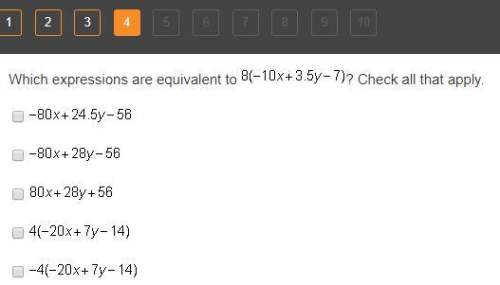
Mathematics, 15.07.2020 01:01, mickimlvn6128
Have you ever wondered what it means to click the "offset carbon emissions" button when you book a flight or train trip? It adds a small cost to your ticket, but how does this reduce emissions? The money is typically used to fund projects that reduce carbon emissions. One such project type is the introduction of more efficient cooking stoves into communities. Much of the world uses inefficient charcoal or wood stoves that result in excessive indoor air pollution, deforestation, and carbon emissions. Switching millions of families to more efficient stoves can result in a significant reduction in carbon emissions. You may read more about such a project here.
In order for a project to claim carbon credits, they must provide accurate estimates of how much carbon that project is saving. An important parameter for cook-stove projects is the reduction in fuel that results from switching to the more efficient stove. Statisticians are needed to design the experiments; it is expensive to do these tests, so figuring out how big the sample size should be in order to get sufficiently accurate estimates, or to detect significant differences between the stove types, is important.
The EXCEL file, stove. xlsx, for this lab contains data from a pilot study using 19 randomly selected cooks. The numbers refer to the weight of firewood (in kg) to cook a regular meal. Each row in the spreadsheet corresponds to the same cook cooking the same meal. You may assume the conditions to carry out a hypothesis test are satisfied. You can assume (based on many similar studies) that the population standard deviation of reduction of firewood used is 0.7kg. Try to store as many decimal places as possible in intermediate steps.
1. Is this pilot study a matched pairs design? Briefly explain.
2. Are the variables "Old Stove" and "Improved Stove" independent? Briefly explain.
3. Create a new variable called "Reduction" which is defined to be "weight of firewood used for old stove minus weight of firewood used for improved stove, in kg". Are the values for "Reduction" independent?
Briefly explain.
4. What is the estimated mean reduction in firewood used (round to 4 decimal places)?
5. Find the 90% CI for the true mean reduction in firewood used. You may assume the population standard deviation of reduction in firewood used is 0.7. What is the margin of error?
6. For a project to qualify for carbon credits, the required precision for estimates of the amount of wood saved per new stove adopted is 90/10, i. e. the 90% confidence interval must have a margin of error no greater than 10% of the value of the estimate. Will the data from the pilot study enable the project to qualify for carbon credits?
7. What is the minimum sample size required to meet the 90/10 precision requirement?
8. We want to know if the weight of wood used with the improved stove is significantly less than the weight of wood used with the old stove. State the null and alternative hypotheses for such a test.
9. Without performing any calculations for the hypothesis test, what will be a range of values of the p-value based on the 90% confidence interval calculated in question 5 to test the hypothesis in question 8 at α = 0.10? Briefly explain.
a) p-value is less than 0.05
b) p-value is less than 0.10
c) p-value is greather than 0.05
d) p-value is greater than 0.10
10. Is there enough evidence to reject H0 at the α = 0.1 level of significance? What does this mean in context of this project?
11. What is the critical value of this hypothesis test at the α = 0.1 level of significance?
Old Stove Improved Stove
3.9 1.8
3.8 2.65
3.65 1.5
3.2 2.2
2.6 1.25
2.4 1.65
2.3 1.4
2.25 1.7
2.2 2.15
2.1 1.8
2 1.4
2 1.05
1.9 0.8
1.9 1.75
1.8 0.55
1.55 0.9
1.4 1.3
1.4 1.1
1.15 0.75

Answers: 1
Other questions on the subject: Mathematics

Mathematics, 21.06.2019 22:00, krandall232
Match the scale and the actual area to the area of the corresponding scale drawing. scale: 1 inch to 4 feet actual area: 128 square feet scale: 1 inch to 7 feet actual area: 147 square feet scale: 1 inch to 8 feet actual area: 256 square feet scale: 1 inch to 5 feet actual area: 225 square feet area of scale drawing scale and actual area scale drawing area: 3 square inches arrowright scale drawing area: 8 square inches arrowright scale drawing area: 4 square inches arrowright scale drawing area: 9 square inches arrowright
Answers: 2


Mathematics, 22.06.2019 01:30, cindy9330
In the picture below, line pq is parallel to line rs, and the lines are cut by a transversal, line tu. the transversal is not perpendicular to the parallel lines. note: figure is not drawn to scale. which of the following are congruent angles?
Answers: 1

Mathematics, 22.06.2019 02:00, fespinoza019
The null and alternate hypotheses are: h0: μ1 ≤ μ2 h1: μ1 > μ2 a random sample of 22 items from the first population showed a mean of 113 and a standard deviation of 12. a sample of 16 items for the second population showed a mean of 99 and a standard deviation of 6. use the 0.01 significant level. find the degrees of freedom for unequal variance test. (round down your answer to the nearest whole number.) state the decision rule for 0.010 significance level. (round your answer to 3 decimal places.) compute the value of the test statistic. (round your answer to 3 decimal places.) what is your decision regarding the null hypothesis? use the 0.01 significance level.
Answers: 1
Do you know the correct answer?
Have you ever wondered what it means to click the "offset carbon emissions" button when you book a f...
Questions in other subjects:


Physics, 08.10.2019 07:00

History, 08.10.2019 07:00


History, 08.10.2019 07:00











